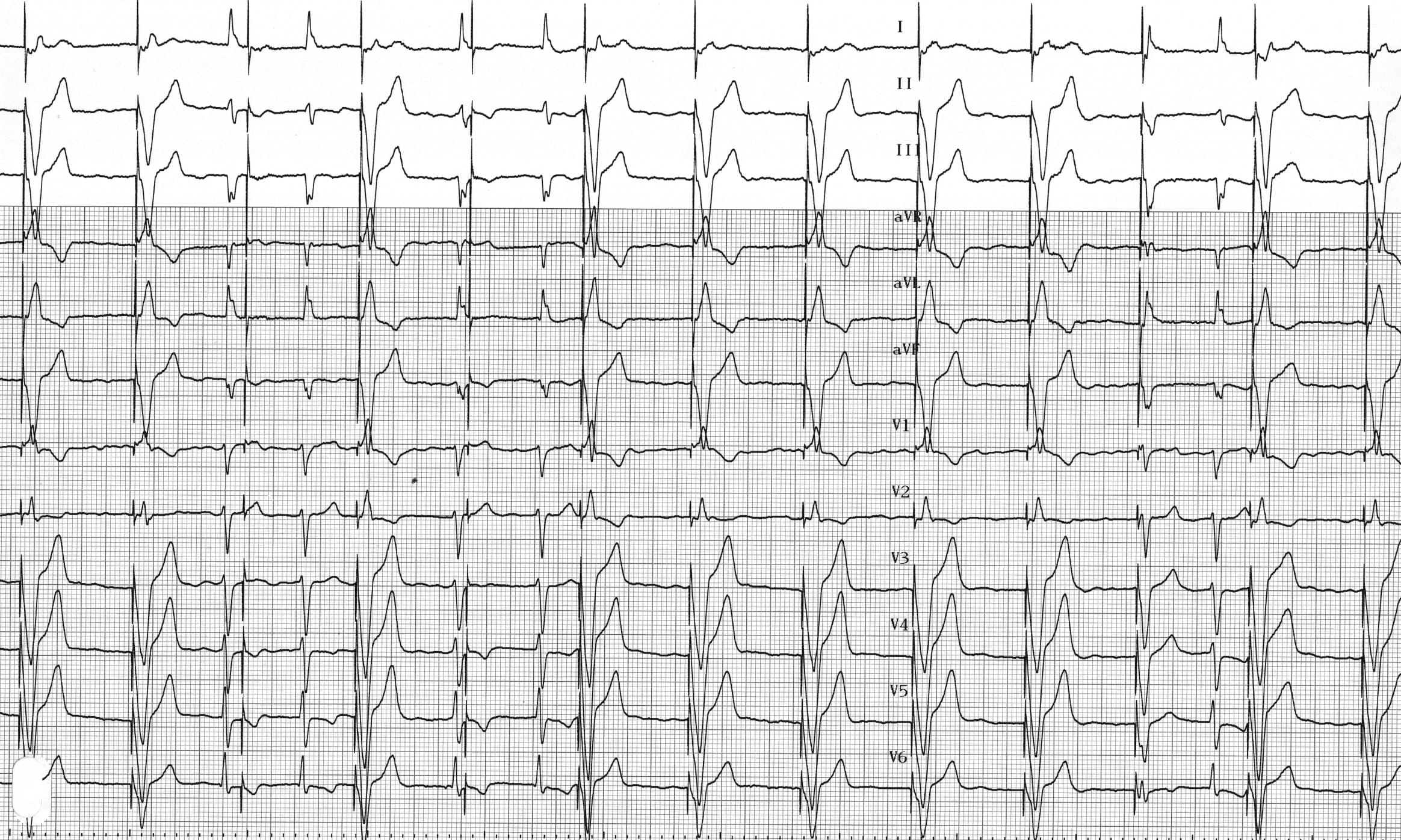Patient
- 85-year-old woman
- permanent atrial fibrillation
- paroxysmal atrio-ventricular block
ventricular undersensing
Time limit: 0
Case Summary
0 of 1 Questions completed
Questions:
Information
You have already completed the case before. Hence you can not start it again.
Case is loading…
You must sign in or sign up to start the case.
You must first complete the following:
Results
Case complete. Results are being recorded.
Results
0 of 1 Questions answered correctly
Time has elapsed
Categories
- Not categorized 0%
-
12 lead ECG
- atrial fibrillation
- spontaneous ventricular activation
- asynchronous ventricular pacing (ventricular undersensing); spontaneous QRS complexes do not inhibit ventricular pacing
- ventricular pacing in the vulnerable period (R/T)
Comments
- the sensitivity, expressed in millivolt (mV), depicts the ability of the pacemaker to properly sense spontaneous cardiac events
- a pacemaker is equipped with input filters that specifically detect P waves in the atrium and R waves in the ventricle based on the analysis of three characteristics of these electrical signals: rate spectrum, slope and amplitude
- adequate programming of the sensitivity level should allow sensing all spontaneous cardiac events occurring in the implanted chamber while not sensing events of a different nature (sensing of cardiac signals from the other chamber, myopotentials, interference, etc.)
- atrial or ventricular undersensing is reflected on the electrocardiogram by the presence of fixed pacing rate artifacts despite the presence of spontaneous complexes that do not inhibit pacing
- this tracing reveals ventricular undersensing, sometimes leading to pacing during a vulnerable period
- in the absence of proper sensing, the pacemaker operates in asynchronous mode with no possibility of inhibition due to the spontaneous ventricles
- there is a small theoretical risk of inducing a malignant polymorphic ventricular arrhythmia compromising patient survival
- 1
- Current
- Review / Skip
- Answered
- Correct
- Incorrect
-
Question 1 of 1
1. Question
This is a typical case of ventricular undersensing since we observe..
CorrectIncorrect



